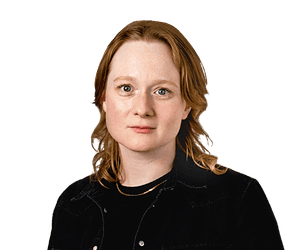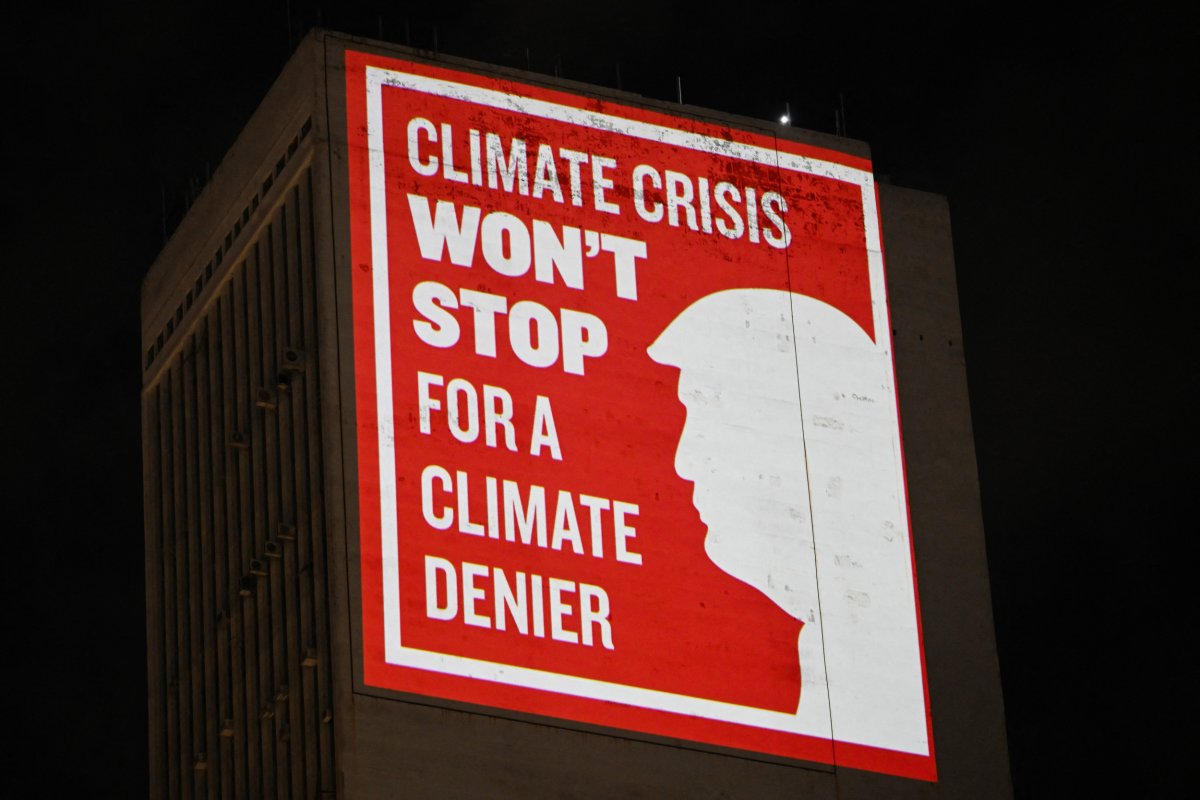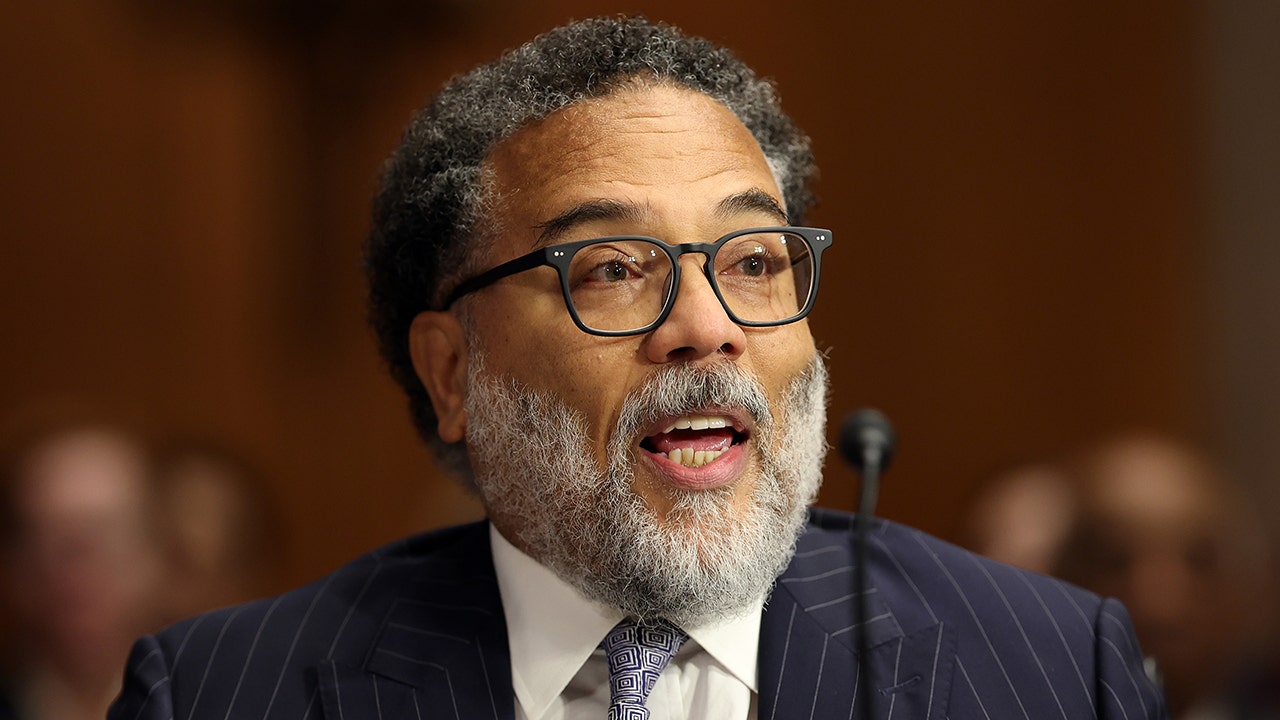California
This is reform? California wants to let its billionaires go on Medicaid
Politicians and investigative journalists have long complained about the billionaires that have no taxable income and pay no taxes despite their wealth. In response, politicians have advanced many constitutionally dubious proposals to tax wealth on grounds of equity and fairness.
It is odd, then, that there has been so little attention paid or protest given to the pending proposal in California — phase II of its 2021 reform — to strike all asset testing for those above age 65 in determining eligibility for long-term care benefits from Medicaid.
Lest anyone dismiss this as another crazy California idea that will never be enacted, like universal state government health insurance and racial reparations, this Medicaid expansion proposal is well on its way to approval, part of a series of incremental steps over the last several years that have already loosened Medicaid eligibility standards.
And this one offers a dangerous precedent for other states. Because Medicaid is jointly financed by the federal government, at fifty cents on the dollar or more, non-California taxpayers, including many middle-income workers living in states with stricter Medicaid rules, will actually end up paying a huge chunk of this costly California policy’s billion-dollar annual price tag.
Medicaid was designed as a jointly financed federal-state program to provide health care for the poor. It also pays for nursing-home care and increasingly for home healthcare for individuals, especially the disabled and elderly who spend down their assets before becoming eligible. Eligibility for various types of long-term care benefits is determined by medical need and a set of income and asset tests, which differ by state and have changed over time, but are within a federal framework.
California has long played loose with eligibility, benefits and other rules, even beyond the allowable leniencies in federal law. For example, under “Phase I” of the state’s 2021 reform legislation, its asset-test maximum for Medicaid eligibility is $130,000 (compared to just $2,000 in most states) for individuals and $195,000 (compared to $3,000) for couples.
Also, the “look-back” period to identify and disallow strategic transfers of assets to gain Medicaid eligibility is only 30 months, whereas federal law calls for 60 months. California’s look-back also does not apply if the applicant is not in a nursing home at the time of application. Federal law penalizes such strategic transfers, regardless of whether the person is institutionalized. California also turns a blind eye to as much as $12,000 in daily transfers of wealth to relatives per day, meaning that the wealthy can strategically shift as much as $4.4 million per year in order to pass the asset test.
California also completely disregards applicants’ net housing equity, which most states start to count as an asset after exempting the first $688,000 to $1,033,000. Retirement assets, including spousal retirement assets, are also disregarded, unlike in most other states.
Estate recovery from deceased recipients only applies to assets going through probate, thus bypassing retirement and insurance assets entirely. Unlike in some states, no liens are placed on housing. Despite the great wealth held in California, with home values averaging $750,000, the Medicaid program’s estate recovery efforts have lagged over the years, falling from $72 million collected in 2015 to $17 million in 2020.
Many of these leniencies directly contradict federal law, yet they were somehow approved by federal regulators at the Center for Medicare and Medicaid Services (CMS), without request for public comments, through a series of state plan amendments. Today, Phase II of California’s pending proposal — the total elimination of asset testing — is before CMS.
California officials told CMS that the total disregard of assets would annually cost the federal government only $115 million. Their own budget showed an increase of 37,000 newly eligible individuals and a $400 million total cost.
This is low compared to the approximately $35 billion that California spends on long-term care benefits through Medicaid. My own rough calculation, based on data from the Health and Retirement Study on asset holdings and another survey on long-term care needs, is that the annual additional cost to Medicaid from California’s disregard of assets will actually be at least $1.2 billion, with over 100,000 newly-eligible individuals.
Roughly half of this bill will be picked up by the federal government, not just by California taxpayers.
Even more concerning than the bad policy — which is contrary to the financial self-reliance of those who can afford it — is the poor precedent this circumvention of federal law would set for other states in designing their own Medicaid programs. Also, the complete lack of democratic process and bureaucratic transparency at a time of massive federal budget deficits is profoundly disturbing.
It is not too late for CMS and Congress to call these harmful actions into question and stop them.
Mark J. Warshawsky is a senior fellow at the American Enterprise Institute. He served as Vice-Chair on the federal Commission on Long-Term Care in 2013.

California
More than 13,000 structures under threat from Palisades fire, California authorities say – follow live

As the sun sets in California, we’ve gathered photos of the Palisades fire that broke out this morning, around 10:30am local time. Officials have said that the worst of the high winds driving the fire are expected overnight Tuesday into Wednesday. Forecasters predicted the windstorm would last for days, producing isolated gusts that could top 100 mph (160 kph) in mountains and foothills — including in areas that haven’t seen substantial rain in months.
Fire personnel respond to homes destroyed while a helicopter drops water as the Palisades Fire grows in Pacific Palisades, California on January 7, 2025. A fast-moving wildfire in a Los Angeles suburb burned buildings and sparked panic, with thousands ordered to evacuate January 7, 2025 as “life threatening” winds whipped the region. Frightened residents abandoned their cars on one of the only roads in and out of the upscale Pacific Palisades area, fleeing on foot from the 770-acre (310-hectare) blaze engulfing an area crammed with multi-million dollar homes in the Santa Monica Mountains. (Photo by David Swanson / AFP) (Photo by DAVID SWANSON/AFP via Getty Images) Photograph: David Swanson/AFP/Getty Images
You can find more photographs capturing the extent of the damage here:
Speaking at a press conference in Pacific Palisades this afternoon, California governor Gavin Newsom noted that he found “not a few — many structures already destroyed” and thanked President Joe Biden for issuing a Fire Management Assistance Grant.
“No politics, no hand-wringing, no kissing of the feet,” Newsom said. The Democratic governor was scheduled to speak at an event with Biden this afternoon that was rescheduled due to the inclement weather. “My message to the incoming administration, and I’m not here to play any politics, is please don’t play any politics.”
Newsom further urged residents to heed evacuation orders: “By no stretch of the imagination are we out of the woods.”
About 15,000 utility customers in southern California have had their power shut off to reduce the risk of equipment sparking blaze. Half a million customers total were at risk of losing power preemptively, the Associated Press reported on Tuesday evening.
Minutes after the J Paul Getty Trust issued a statement on the Palisades fire and efforts to protect the Getty Villa from wildfires, an unidentified official on LAFD radio said that the Getty Villa Museum was “catching on fire”, the Los Angeles Times reports. At this time, it’s not clear whether any structures have caught fire, but officials confirmed the grounds were on fire and that flames were approaching the museum buildings.
The Getty Villa, which is located in Pacific Palisades, displays a collection of Greek, Roman and Etruscan Art. It’s better-known sibling, the Getty Center, is located in Brentwood and contains a broad-ranging collection of European and North American art.
A spokesperson from the Getty Villa confirmed the Trust’s earlier statement to The Guardian, adding that there are “no structures currently on fire”.
Universal Pictures and Amazon MGM Studios canceled two movie premieres scheduled to take place in Los Angeles on Tuesday evening as the city declared a state of emergency amid high winds and the Palisades fire.
Wolf Man had been scheduled to premier at the TCL Chinese Theater and Unstoppable would have shown at the DGA Theater.
More than 13,000 structures under threat from the Palisades fires, according to LA fire department fire chief Kristin Crowley, with the Getty Villa being one of them. In a statement issued this afternoon, Katherine E Fleming, president and CEO of the J Paul Getty Trust, said the museum is closed to non-emergency staff and will remain closed at least through 13 January.
“Fortunately, Getty had made extensive efforts to clear brush from the surrounding area as part of its fire mitigation efforts throughout the year. Some trees and vegetation on site have burned, but staff and the collection remain safe,” she said. “Additional fire prevention measures in place at the villa include water storage on-site. Irrigation was immediately deployed throughout the grounds Tuesday morning. Museum galleries and library archives were sealed off from smoke by state-of-the-art air handling systems. The double-walled construction of the galleries also provides significant protection for the collections.”
The city of Los Angeles has declared a state of emergency for the “wind event”, the city council president Marqueece Harris-Dawson announced during a press conference Tuesday afternoon.
“We want everybody to know that the city is well prepared and has a tremendous emergency management infrastructure,” said Harris-Dawson. “If you can stay off of our roads, please do so to allow emergency vehicles to go across the city.”
Photos from the Palisades fire are beginning to be sent out, showing the destruction of homes and the billowing black smoke choking the sky.
As the Palisades fire reached the Malibu coast Tuesday afternoon, the California department of forestry and fire protection (CalFire) announced road closures and evacuation shelters.
An evacuation center has been established at the Westwood Recreation center on South Sepulveda Boulevard. Meanwhile, the southbound Pacific Coast Highway has been closed at Las Flores Canyon Road, Topanga Canyon Boulevard and Coastline Drive.
The Palisades fire has consumed more than 1,200 acres since it broke out at about 10.30am on Tuesday morning, and destroyed several homes in an affluent community along the Pacific Ocean.
Nearly 30,000 residents are under evacuation orders and more than 13,000 structures are under threat, said Kristin Crowley, fire chief of the LA fire department.
Actor Eugene Levy, the honorary mayor of Pacific Palisades, who was forced to evacuate, told the Los Angeles Times while stuck in traffic: “The smoke looked pretty black and intense.” Other evacuees described harrowing escapes, one woman recounting to ABC7 how she abandoned her vehicle and fled with her cat in her arms: “I’m getting hit with palm leaves on fire … It’s terrifying. It feels like a horror movie. I’m screaming and crying walking down the street.”
The Los Angeles school district was also forced to relocate students from three campuses, and Joe Biden had to cancel plans for an event announcing two national monuments.
Lois Beckett
By mid-afternoon, shoppers at a luxury outdoor mall in Century City, about 12 miles east of the Pacific Palisades, were still strolling around as usual. But outside the mall, billows of smoke were visible to the west, and the views in the distance were starting to look hazy.

Lois Beckett
I’m currently driving east across Los Angeles, and am close to Beverly Hills at the moment. Ahead of me, looking towards downtown, the view is pretty clear and sunny, though the palm trees that line the streets are tossing pretty dramatically in the wind. But behind me, in my rearview mirror, I can see billows of smoke from the Pacific Palisades fire to the west. The most recent air quality readings across Los Angeles were in the healthy range, but I’m expecting that the air quality is going to worsen quickly as the smoke spreads across the city.
As a fast-moving wildfire spreads near Los Angeles on Tuesday, we’re bringing you this live blog with the latest news on fires caused by a “life-threatening” windstorm that has hit southern California this week. The region is expected to see what could amount to the strongest winds in more than a decade, bringing extreme fire risk to areas that have been without significant rain for months.
A large swath of southern California, home to millions of people, is under what officials have described as “extreme risk” from the destructive storm. The weather service warned of downed trees and knocked over big rigs, trailers and motorhomes, and advised residents to stay indoors and away from windows. Powerful offshore gusts will also bring dangerous conditions off the coasts of Orange county and LA, including Catalina Island, and potential delays and turbulence could arise at local airports.
California
Biden’s new California monuments will ban drilling on 849,000 acres

President Joe Biden is signing off on two new national Native American monuments in California that will ban drilling on 849,000 acres of land.
Chuckwalla National Monument will sit in the south and Sáttítla National Monument in the north of the state.
Why It Matters
Biden is using the final weeks of his presidency to build on long-established policy targets, in this instance conserving at least 30 percent of U.S. lands and waters by 2030 through his “America the Beautiful” initiative. The Chuckwalla and Sáttítla National Monuments join a growing list of protected areas under Biden’s administration.
However, this isn’t the first environmentally-charged proposition to come from the Biden administration during his last month in power—on Monday, he announced a ban on new offshore oil and gas drilling in most U.S. coastal waters.
President-elect Donald Trump claims last-minute calls like this only serve to make their power transition more complicated.
Kent Nishimura/Getty Images
What We Know
The White House emphasized that these monuments will protect water resources, preserve culturally significant sites, and ensure access to nature for communities.
The designations block development activities such as mining and drilling, safeguarding ecosystems that are home to diverse plant and animal species.
Both monuments will be co-stewarded with tribes, enhancing tribal sovereignty and involvement in land management, continuing a trend of comanagement that began with Utah’s Bears Ears National Monument.
Why the Land is Important to Native Americans
The Chuckwalla National Monument covers 624,000 acres in Southern California, spanning from the Coachella Valley to the Colorado River. Sáttítla National Monument includes 225,000 acres of pristine landscapes in Northern California.
Native Americans revere the land because of its deep cultural and spiritual importance, including the Cahuilla, Mohave, Pit River, and Modoc tribes.
Sáttítla is near California’s northern border with Oregon. It encompasses mountain woodlands, meadows, and habitats for rare wildlife. Chuckwalla National Monument, named after the large desert lizard native to the region, protects public lands south of Joshua Tree National Park.

GaryKavanagh/Getty Images
What People Are Saying
President and CEO of the nonprofit Trust for Public Land Carrie Besnette Hauser said the designation of the monuments “marks a historic step toward protecting lands of profound cultural, ecological and historical significance for all Americans.”
A statement from Fort Yuma Quechan Tribe read: “The protection of the Chuckwalla National Monument brings the Quechan people an overwhelming sense of peace and joy [ …] tribes being reunited as stewards of this landscape is only the beginning of much-needed healing and restoration, and we are eager to fully rebuild our relationship to this place.”
President-elect Donald Trump’s spokesperson, Steven Cheung, told Newsweek in an email [regarding the ban on offshore oil and gas drilling]: “It’s despicable what Joe Biden is doing, and he is going against the will of the people who gave President Donald Trump a historic mandate to Make America Great Again.”
Donald Trump wrote on Truth Social “Biden is doing everything possible to make the TRANSITION as difficult as possible, from Lawfare such as has never been seen before, to costly and ridiculous Executive Orders on the Green New Scam and other money wasting Hoaxes.”

LUIS ROBAYO/AFP via Getty Images
What’s Next
With Biden’s term nearing its end, additional conservation announcements may follow as the administration seeks to solidify its environmental legacy.
Trump appears determined to unravel that, declaring on Monday to conservative radio host Hugh Hewitt that, after he’s inaugurated on Jan. 20, Biden’s drilling ban will “be changed on day one.”
This article includes reporting from The Associated Press
California
Biden creates 2 new national monuments, setting a conservation record

A chuckwalla lizard sunbathes in this 2007 file photo from Amboy Crater National Natural Landmark in southern California. The lizard is the namesake for the new Chuckwalla National Monument.
David McNew/Getty Images
hide caption
toggle caption
David McNew/Getty Images
President Biden is creating two new national monuments in California on Tuesday, preserving the lands from development and setting a record for the most land and waters conserved by any president, the White House said.

The Sáttítla Highlands National Monument covers more than 224,000 acres in Northern California, and includes the ancestral homelands of the Pit River Tribe and Modoc Peoples. A dormant volcano is at its center, and it is home to the longest-known lava tube system in the world.
The Chuckwalla National Monument covers more than 624,000 acres south of Joshua Tree National Park in southern California, and includes sacred sites important to five groups of indigenous peoples and 50 rare species of plants and animals, including the Chuckwalla lizard.

The Chuckwalla monument is part of a corridor of protected lands stretching about 600 miles west through a total of close to 18 million acres in California, Nevada, Arizona and Utah that the White House is calling the Moab to Mojave Conservation Corridor.
In total, the White House said Biden protected 674 million acres of land and waters through monuments and other designations during his four years in office.
-

 Business7 days ago
Business7 days agoThese are the top 7 issues facing the struggling restaurant industry in 2025
-

 Culture7 days ago
Culture7 days agoThe 25 worst losses in college football history, including Baylor’s 2024 entry at Colorado
-

 Sports6 days ago
Sports6 days agoThe top out-of-contract players available as free transfers: Kimmich, De Bruyne, Van Dijk…
-

 Politics5 days ago
Politics5 days agoNew Orleans attacker had 'remote detonator' for explosives in French Quarter, Biden says
-

 Politics5 days ago
Politics5 days agoCarter's judicial picks reshaped the federal bench across the country
-

 Politics3 days ago
Politics3 days agoWho Are the Recipients of the Presidential Medal of Freedom?
-

 Health2 days ago
Health2 days agoOzempic ‘microdosing’ is the new weight-loss trend: Should you try it?
-

 World7 days ago
World7 days agoIvory Coast says French troops to leave country after decades



















